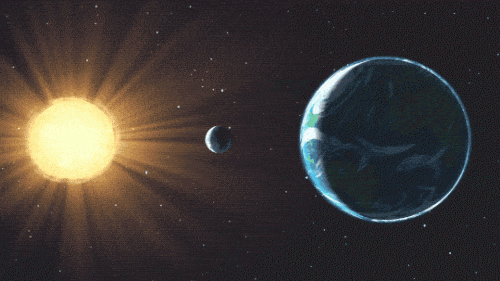In the time before a total solar eclipse, most of the attention is directed to the Sun, but Earth's Moon also stars in a central role.

"A total eclipse is a dance with three partners: the Moon, the Sun and the Earth," said Richard Wonderk, a lunar scientist at NASA's Goddard Space Flight Center in Greenbelt, Maryland. "It can only happen when the moon and sun are delicately aligned in our sky."
In this type of eclipse, the Moon completely obscures the face of the Sun for several minutes, allowing a rare opportunity to glimpse the pearly white halo of the Sun's corona, or dim outer atmosphere. This requires an almost perfect alignment of the moon and the sun, and the apparent size of the moon in the sky must match the apparent size of the sun.
On average, a total solar eclipse occurs about every 18 months somewhere on Earth, but in some places it happens much less often.
The total eclipse on August 21, 2017 will be visible in a path 110 km wide that will cross 14 states in the continental US from Oregon to South Carolina. Along this path of total coverage, the full shadow (umbria), or dark inner shadow, of the Moon will move at speeds of nearly 4,800 mph in western Oregon and up to 2,400 mph in South Carolina.
On maps of eclipses, the full shadow is usually shown as a dark circle or oval running across the landscape. But a detailed bra created for this year's eclipse reveals that the shape is more like a crude polygon with some curvature at the sides, and it changes as the shadow moves along the path of full coverage.
Watch: A video explaining how our moon creates a solar eclipse, why it is an event that is seen so rarely, and how data from NASA's Lunar Survey Orbit has improved our ability to map the path of complete coverage
"With this new lens, we can show the full shadow more accurately by taking into account the effect of altitude at different points on Earth, and also the way light rays flow through the craters along the rough rim of the moon," said the lens creator. of NASA Ernie White at Goddard.
This unprecedented level of detail was achieved by combining three-dimensional mapping of the lunar surface, made by NASA's Lunar Reconnaissance Orbiter (LRO), and elevation information from several databases.
LRO's mapping of the lunar soil also makes it possible to predict with great precision when and where the bright flashes of light called Bailey beads or the diamond ring effect will appear. These bright spots that appear along the rim of the dark circle just before total eclipse, and again immediately after, are created by sunlight peeking through cracks along the moon's uneven rim.
In the very distant future, the spectacular displays of total solar eclipses will cease. This is because the moon, on average, is slowly moving away from the earth at a rate of about 4 cm per year. Once the moon is far enough away, its apparent size in the sky will be too small to completely cover the sun.
"Over time, the number and frequency of total solar eclipses will decrease," Wondrak said. "In about 600 million years, Earth will experience the beauty and drama of a total solar eclipse for the last time."
For information on the NASA website
For more information on the upcoming solar eclipse in 2017 visit: https://eclipse2017.nasa.gov
For more information about NASA's Lunar Survey Orbiter, visit: www.nasa.gov/lro
More on the science website about the complete solar eclipse 2017:
- The guide to the solar eclipse of August 21 in the USA
- Exclusive: An interview with the Israeli researcher who will chase the solar eclipse in NASA planes
- NASA is looking forward to the solar eclipse to help understand the Earth's energy system
- Live broadcast of the solar eclipse online from fifty balloons
